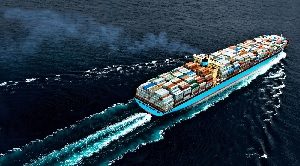 As onshore activities including power generation and road transport have increasingly faced constraints on their greenhouse gas emissions, the global shipping industry has escaped with almost no restrictions. Shipping, along with aviation, was not directly covered by the Paris climate agreement of 2015, and the industry has not had any cap or target for reductions in emissions. Until now.
As onshore activities including power generation and road transport have increasingly faced constraints on their greenhouse gas emissions, the global shipping industry has escaped with almost no restrictions. Shipping, along with aviation, was not directly covered by the Paris climate agreement of 2015, and the industry has not had any cap or target for reductions in emissions. Until now.
This week, countries have been meeting at the London headquarters of the UN’s International Maritime Organisation, to debate a global agreement to reduce emissions from ships. Many countries and environmental groups have been arguing that there is an urgent need to set emissions targets. Shipping accounts for about 2.5 per cent of global greenhouse emissions today, but that is expected to rise sharply. On one set of projections, shipping alone could account for 16 per cent of the total “carbon budget” of greenhouse gases that cannot be exceeded if the world is to have a reasonable chance of limiting global warming since pre-industrial times to 1.5C. The Paris agreement committed countries to “pursuing efforts” to stay inside that 1.5C limit.
At the IMO meeting, however, there has sometimes seemed to be a disconnect between what countries have said about the Paris goals and what they are actually prepared to agree to in emissions reductions. Brazil and Argentina, among others, have opposed the most ambitious proposals, arguing that their trade is heavily dependent on long-distance shipping, so they would be disproportionately penalised by the higher costs imposed by emissions targets. By Thursday, a compromise had emerged, which was confirmed in the final agreement on Friday. The countries agreed to cut greenhouse gas emissions by at least 50 per cent by 2050, which was a more demanding objective than some had hoped for, but less than the cut of 70 per cent or more sought by the EU. By the closing stages of negotiations, the main objectors to a more ambitious deal were reported to be Saudi Arabia and the US.
Even meeting that compromise target will require huge change in the industry to shift away from bunker fuel, which is mostly heavy and dirty residual fuel oil. The most promising options include hydrogen, ammonia, and biofuels. Batteries have some short-range applications, and hybrid ships are being developed, but their capabilities are still very limited. The number of ships using liquefied natural gas for fuel has been growing rapidly, but although LNG is cleaner in terms of sulphur and nitrogen oxide pollution, it can actually result in higher greenhouse gas emissions.
A more immediate issue for world energy markets is the IMO’s regulations for cutting sulphur pollution from ships, which take effect at the start of 2020. The market for high-sulphur marine fuel oil is expected to collapse at the end of 2019, while demand for low-sulphur gasoil jumps. Philip Verleger, the energy economist, has described the expected increase in demand for cleaner fuel as a “tsunami” that could send the price of crude soaring, perhaps to $200 a barrel. Analysts at Wood Mackenzie suggested the impact could be somewhat smaller but still significant, projecting that the cost of shipping fuel could rise by about 25-60 per cent. Antoine Halff of Columbia University’s Center on Global Energy Policy, however, argued last year that “the transition may not prove as disruptive as some analysts seem to fear”. The IMO’s secretary-general reiterated in February that there would be “no turning back” from the new sulphur limits.
Source: “An Emissions Overhaul for Shipping”, Financial Times
